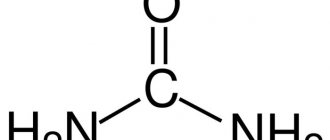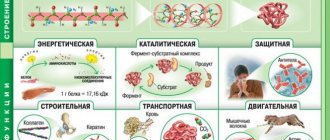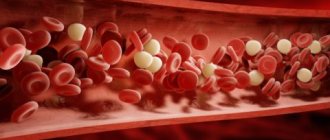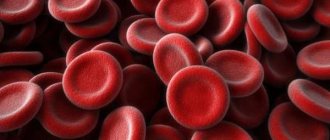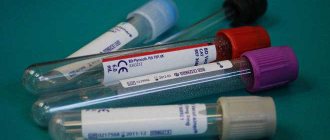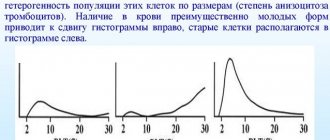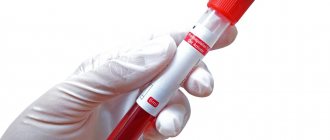Sodium is one of the most common electrolytes and its levels in human blood vary within very strict limits. This range cannot be violated. This element “pulls water with it,” and we all know about the presence of this phenomenon. After eating salty food, we all feel thirsty, and it is sodium that “requires” dilution with water. Therefore, a change in the normal level of sodium in the blood also leads to a redistribution of fluid. Let's look into these issues.
Sodium content in food
Sodium is a substance that is found in almost all foods.
Approximately 2 g of sodium - 2 times the daily requirement - contains 10-15 g (1 teaspoon or ten spoons) of table salt. In addition to salt, the leaders in sodium content are hard cheeses, sauerkraut, seaweed and other seaweed, canned food, seafood, mushrooms and meat products.
Less sodium in dairy products, eggs, cereals, vegetables and fruits. Almost all food products contain some amount of sodium, therefore, in the absence of diseases and a normal diet, there is no need to worry about hyponatremia. At the same time, signs of sodium deficiency cannot be ignored, as this can cause the development of serious diseases of internal organs. To exclude hypo- and hypernatremia, determine the level of sodium in urine or hair.
If hyponatremia is suspected, nutritionists advise not to increase the sodium chloride or table salt content in the diet, but to try to eat more seaweed, seafood or cheeses. This will help “saturate” the body with sodium and reduce the risk of edema and high blood pressure.
Also, when treating hyponatremia or hypernatremia, it is necessary to remember that the absorption of sodium is affected by the content of potassium, chlorine and vitamin D.
What is hypernatremia
With this pathological process, the amount of sodium in the blood in men and women can increase significantly. Hypernatremia is almost always accompanied by hyperosmolarity. When plasma osmolarity exceeds 290 mOsm/L, the pituitary gland begins to produce antidiuretic hormone. A decrease in the amount of intercellular fluid stimulates this process, while an increase, on the contrary, prevents its progression. The hormone enters the kidneys, causing them to stop producing and excreting urine.
The causes of high sodium in the blood are the following pathological conditions: dehydration and exhaustion of the body when large amounts of water are excreted by the lungs and skin. This is observed with an increase in temperature, mechanical ventilation with dry breathing mixtures, installation of a tracheostomy, the use of concentrated oxygen, open healing of burns, and increased sweating. It is generally accepted that every 3 mmol/l of sodium above the norm indicates a lack of 1 liter of water.
High levels of sodium in the blood are observed when feeding through a tube without introducing the required amount of fluid into the diet and kidney disease accompanied by oliguria. The main symptoms of hypernatremia are:
- strong thirst;
- tremor of the limbs;
- ataxia;
- confusion;
- convulsions and epileptic seizures;
- coma.
The clinical picture is most pronounced when it is significantly higher than normal.
What substances can still be detected using a hemotest?
Using a blood test, you can check the level of other trace elements contained in our blood. Equally important microelements in addition to sodium are potassium, chlorine and calcium. These are the same important and necessary microelements, which also need to be monitored.
They also perform their important functions in our body and have their own levels in the blood:
- Potassium in the blood should be no less than 3.5 and no more than 5.1 mmol/l.
- Chlorine is within 136 – 145 mmol/l.
- Calcium – 1.05-1.3 mmol/l.
Elevated potassium levels may be caused by the following:
- presence of diabetes;
- diseases of the excretory system;
- presence of injuries.
Low potassium levels are caused by:
- excessive consumption of diuretics;
- severe gastrointestinal disorders (diarrhea, vomiting);
- large amounts of insulin.
Increased chlorine levels (dehydration) occur when:
- diabetes insipidus;
- kidney diseases.
Reduction of chlorine (water excess):
- prolonged vomiting;
- loss of salts (nephritis);
- water intoxication.
Increased calcium levels:
- excess vitamin D;
- bone diseases;
- excess parathyroid hormone released by tumors.
A decrease in calcium in the blood is provoked by:
- impaired absorption of calcium by the intestines;
- kidney problems;
- hypoparathreosis;
- vitamin D deficiency.
Sodium is very important for our body. Undoubtedly, in order to feel good and live a full life, we need to take care of its sufficient content in our body. But we need to remember about other substances necessary for the functioning of our organs. First of all, the content of essential microelements within us depends on the products we consume and the type of activity we engage in.
Sodium
Sodium is the main extracellular cation, an element that helps the body actively grow and develop. It ensures the transport of nutrients to the cells of the body, participates in the generation of nerve impulses, has an antispasmodic effect, activates digestive enzymes and regulates metabolic processes.
Sodium leaves the body through sweating. People constantly need it, especially those who experience severe physical activity. You need to constantly replenish your sodium supply. The daily sodium intake is about 550 mg. Plant and animal sources of sodium: table salt, cereals, soy sauce, vegetables, beans, organ meats, seafood, milk, eggs, pickles, sauerkraut.
When the amount of sodium cations in the blood changes, the functioning of the kidneys, nervous system, and blood circulation is disrupted.
A blood test for sodium electrolytes is carried out for gastrointestinal dysfunction, diseases of the excretory system, and endocrine pathologies.
Hypernatremia (increased levels of the element in the blood) develops when:
- Excess salt in the diet,
- Long-term hormone therapy
- Pituitary hyperplasia,
- Adrenal tumors,
- Comatose state
- Endocrinopathies.
The causes of hyponatremia are:
- Refusal of salty foods,
- Dehydration resulting from repeated vomiting or prolonged diarrhea
- Hyperthermia,
- Loading doses of diuretics,
- Hyperglycemia,
- Hyperhidrosis,
- Prolonged shortness of breath
- Hypothyroidism,
- nephrotic syndrome,
- Heart and kidney diseases,
- Polyuria,
- Cirrhosis of the liver.
Hyponatremia is manifested by nausea, vomiting, decreased appetite, palpitations, hypotension, and mental disorders.
Preparing for an Electrolyte Test
A blood test for sodium levels is usually ordered in the following cases:
- malfunctions of the digestive system (digestive-intestinal tract);
- dehydration;
- kidney diseases.
Donating blood for testing requires compliance with certain preparation conditions. If you do not follow them, you will receive an inaccurate test result.
What does preparation for donating blood for analysis include:
- Blood is donated on an empty stomach. You should not eat food for no more than 14 hours, and no less than 8. For this purpose, blood is donated in the morning, between 8 and 11 o’clock. The day before donating blood, refrain from very heavy food and any drinks other than water.
- If you smoke, abstain from your habit for at least an hour before taking the test.
- If you are taking medications, ask your doctor in advance if you need to stop taking them for a certain period of time. This should be done because some drugs may interfere with your test.
- It is better to postpone any instrumental studies to another time after the analysis.
- Try to avoid various stresses. Before the procedure itself, sit for 10-15 minutes, trying to remain in a calm state.
Hypernatremia increased sodium concentration
When the sodium content in the blood serum is elevated, a disease called hypernatremia occurs. With the development of this pathology, the concentration of sodium in the serum increases to more than 145 mmol/l - this is a moderate form of pathology. If the level of sodium in the blood exceeds 155 mmol/l, this indicates the development of a severe form of this pathology.
To clarify the amount of sodium ions in the blood serum, it is necessary to take an analysis. In modern laboratories using the latest technologies, it is possible to obtain informative results in the shortest possible time. But to do this, you must adhere to the rules of preparation for laboratory research. The specialist will recommend the day before:
- Do not overuse salty foods
- Reduce the amount of liquids
- Do not play sports and limit physical labor
- The last meal should be no later than eight hours before the test
- Donate blood in the morning on an empty stomach
The main reason for the development of this pathology is excessive salt consumption with insufficient fluid intake. These two factors lead to a rapid increase in sodium levels in the blood.
Hypernatremia also develops as a result of:
- Serious kidney pathology
- Violation of water balance and electrolyte metabolism in the body
- Dyspeptic disorders of the stomach and intestines
- Increased sweating
- Long-term use of drug therapy (hormones, steroids)
The symptoms of this disease are characterized by signs of hypertension, hyperthermia, drinking large quantities of liquids, rapid heartbeat, dry skin, trembling fingers, increased daily urine output, muscle tension, and loss of consciousness. If you do not treat on time, serious complications will arise from the heart, kidneys, nervous and circulatory systems, including death.
If the level of the element in the blood is elevated, specialists direct their actions to eliminate the cause of the pathology and recommend that the patient pay attention to nutrition. The diet should contain a minimum of salt and salty foods
It is advisable to eat food prepared at home. The menu includes dairy and protein dishes, fresh vegetables and fruits.
While watching the video you will learn about blood levels.
A complete examination of blood composition, especially with the help of automated titration, will accurately determine the level of sodium in the blood. A correct and nutritious diet, as well as regular preventive examinations with doctors, will allow you to promptly identify the slightest deviations from the norm of sodium in the blood.
How to bring sodium concentration back to normal
It is important to maintain the amount of sodium in the blood at the proper level. To avoid its reduced or greatly increased amount, you should adhere to certain dietary rules, not take diuretics without the urgent recommendations of a specialist, and monitor your own condition of the body.
The diet implies, first of all, control of fluid intake, because the more a person drinks, the more it is retained in the body.
If you play sports, it is recommended to drink special sports drinks. They contain the required amount of electrolytes, but if their taste is not pleasant, you can replace them with saline solution or coconut water. Saline solution at home looks like a pinch of salt in a glass of warm water. One banana also works great in this situation.
Products with sodium
Sodium-rich foods are great for reducing sodium levels in the blood: table salt itself, bouillon cubes, cheese, bacon and salami, caviar and soy sauce, celery or carrot juice, spinach, passion fruit, as well as processed meat and sausage.
The role of sodium in the body
Sodium is truly incredibly important for our body. It is a silvery-white soft metal and is an extracellular alkaline cation. Sodium is considered the most important electrolyte contained in the blood, and it is responsible for the formation of alkaline and acidic compounds in the body and for the synthesis of new salts.
It is very useful and we need it both as a separate element and in conjunction with others. It is very difficult to list all his merits. Sodium is present throughout the body, in every organ, in all fluids and tissues, just like potassium.
Distributed this way:
- the majority (about half of all sodium in the body) is found in fluids, mainly in the intercellular substance;
- least of all (less than 10 percent) of sodium is found in cells, and the rest in bone and cartilage tissues.
Due to its high content in liquids, sodium is important for metabolic processes. That is why sodium and potassium are among the most important microelements.
Sodium is a major player in maintaining the balance of water and salt in our cells. It also maintains a normal amount of fluid throughout the body. The overall development of the entire organism depends on it. It penetrates the skin, which promotes better absorption of vitamin D. And this is only part of the beneficial properties of sodium. It is indispensable and very important for the good functioning of organs.
The main functions of sodium in the body:
- Maintaining water and electrolyte balance and water distribution in the body.
- Maintaining blood pressure.
- Maintaining acid-base balance.
- Participation in the transport of various substances and their metabolism.
- Preservation of minerals in the blood.
- Participates in the functioning of the nervous, digestive, excretory, muscular and circulatory systems.
Element deficiency
A deficiency of sodium in the blood is called hyponatremia. Sodium deficiency can be caused by various reasons. Sodium deficiency is quite rare. Sodium deficiency most often occurs in vegetarians, due to their highly limited diet of sodium-rich foods.
Hyponatremia is divided into:
- light (130-134 mmol/l);
- moderate (125–129 mmol/l);
- severe (less than 125 mmol/l).
Hyponatremia occurs:
- Relative - a decrease in the amount of sodium due to its dilution with too much water entering the body, or caused by a violation of the proper removal of water from the body.
- Absolute - a consequence of insufficient sodium entering the body, or too much sodium loss. Ailments of the digestive and excretory systems usually lead to large losses of sodium.
Reasons for rejection
The main and most common causes of hypernatremia:
- too low sodium content in food consumed;
- dehydration of the body;
- some diseases of the kidneys, liver, endocrine diseases, heart failure;
- presence of diabetes mellitus;
- problems with the intestines, in particular with the small intestine;
- the presence of large and serious burns.
How does the deficiency manifest itself and how is it expressed?
Sodium deficiency is manifested and accompanied by the following symptoms:
- noticeably reduced ability to work;
- prolonged nausea and vomiting;
- low blood pressure;
- apathy and irritability;
- poor appetite;
- tachycardia.
Hyponatremia leads to dehydration, which is very undesirable and dangerous. Insomnia, attacks of clouding of consciousness, and muscle weakness also appear. Weight loss and deterioration in intellectual abilities may occur. Problems with the digestive, nervous, excretory and cardiovascular systems may occur.
How to level up?
Symptoms can be present either separately or as a whole system. If hyponathermia is suspected, you should not ignore it or self-medicate, because you do not know for sure what caused the problem and how you need to get rid of it. You should consult a doctor.
A detailed study is carried out and treatment methods are prescribed. To increase sodium levels in the blood, a special diet is self-prescribed. The diet is followed under the supervision of a specialist.
You should pay special attention to foods containing sodium:
- First of all, this is the familiar table salt, which is available in every kitchen.
- Sodium is also found in milk, cottage cheese, carrots, beets, tomatoes, legumes, seaweed and a number of other products.
- Sodium is also found in salty foods such as soy sauce or salted fish or cheeses.
You shouldn't go overboard on salt if you eat enough sodium-containing foods. Be careful with salt so you don't turn your deficiency into excess.
Pay special attention to sea salt, it also promotes good water release
Carefully
Important! It is worth remembering that few people should increase their sodium intake. Before setting a sodium-rich diet for yourself, you need to not only get the necessary tests, but also consult with your doctor.
This is especially important for people with chronic kidney and heart diseases, vascular disorders and the presence of osteoporosis. However, if severe dizziness, cramps, unexpected fatigue and weakness, nausea and severe headache occur, then these are symptoms of low sodium in the blood, which require urgent medical attention.
Excess sodium
Excess sodium is quite rare; in a healthy person, “excess” sodium is excreted in the urine without any consequences for the body.
Oversaturation of the body with sodium is possible when consuming large amounts of table salt with food, impaired sodium metabolism, dehydration and long-term treatment with corticosteroids.
When the concentration of sodium in the body increases, a person experiences severe thirst, sweating increases, and nervous overexcitation or apathy may occur.
In children, excess sodium is manifested by increased excitability, hyperreactivity and aggressiveness. If the child also drinks frequently and has frequent urination, it is necessary to check the sodium concentration in the blood.
A prolonged increase in sodium concentration leads to edema, disruption of the heart, the development of diabetes mellitus and pathology of the nervous system.
Sodium level in blood
What are normal sodium values in a blood test? It is important to understand that the amount of fluid and electrolytes in the body does not depend on gender or age.
The normal concentration is 136-145 millimoles per liter (mmol/l).
This result in a healthy person can be influenced by the composition of the food, more precisely its salinity, the presence of excess water in the body, and the functional capacity of the kidneys. It is very important to understand that special natriuric proteins help excrete this substance through the kidneys; the influence of the hormone aldosterone, which deals with water-salt metabolism and maintains sodium at the proper level, increasing the body’s excretion of potassium, is very important.
For comparison, we can say that of all the electrolytes, the sodium content in the blood is the highest. For example, chlorine ranges from 98 to 107 mmol/l, and potassium is ten times less: no higher than 5.1 millimoles per liter. The doctor should be aware that the blood sodium result may be affected by:
- Amount of salt consumed
- Taking anabolic steroids and corticosteroids,
- Laxatives, and even combined oral contraceptives, increase the concentration of this electrolyte.
If the patient takes diuretics, anticonvulsants such as carbamazepine to treat epilepsy or neuropathic pain, then these drugs, on the contrary, reduce the concentration of sodium in the blood. Let's consider some pathological conditions that lead to disruption of sodium metabolism, and, accordingly, water-salt metabolism.
What is diabetes insipidus
It is not surprising that both diabetes mellitus and diabetes insipidus are treated by endocrinologists. With diabetes insipidus, the earliest sign is the excretion of a large amount of urine: from 3 to 6 liters daily, but this is at an early stage, and “still flowers”. The amount of urine increases, and daily diuresis reaches 20 liters or even more. Then, when the body is exhausted by such an incredible regime (hence the second name - diabetes insipidus), the patient loses weight, his skin dries, his stomach stretches and sinks, because the patient constantly drinks and consumes an absolutely incredible amount of liquid for a healthy person.
Accordingly, the bladder and the renal collecting system are stretched. Everything in the body is aimed at producing this incredible amount of urine, which can reach the volume of two buckets per day. At the same time, the patient cannot stop drinking. If he is limited in fluid intake, he immediately becomes dehydrated. Dry mucous membranes occur, tachycardia appears, blood pressure drops, agitation and blood thickening occur, despite the fact that a person pumps a huge amount of fluid through himself every day. Why does this disease occur? The cause will be a deficiency of the hormone vasopressin, otherwise called antidiuretic hormone, ADH. Its task is to concentrate urine.
Normally, a person knows how to concentrate his urine. This is a rather interesting figure that few people think about. Normal glomerular filtration rates in the kidneys are 120 ml per minute. How much primary urine would we excrete per day if we did not concentrate it at all? Very simple. You need to multiply 0.12 liters by the number of minutes in a day. Accordingly, a person excretes about 170 liters of primary urine per day, but almost all of it is absorbed back (reabsorbed) and concentrated. As a result, we excrete about one and a half liters per day, that is, the concentration capacity of the human kidneys is colossal. If we didn’t have such a concentration apparatus, then we would have to live in water in order to constantly drink these 170 liters, compensating for the loss of fluid. About the same thing happens with diabetes insipidus; it is one of the causes of high sodium levels in the blood.
It is these concentration processes that are regulated by vasopressin, or antidiuretic hormone. Deficiency of this hormone can occur due to various reasons. It is produced in the brain, but if a person has had a severe traumatic brain injury, encephalitis, a tumor of the hypothalamus or pituitary stalk, there are metastases to the brain, or any autoimmune diseases, then this serious condition may develop.
Of course, some part of the hormone is still usually produced, and not a single person is able to go to the toilet and excrete more than 150 liters per day, but, nevertheless, this condition is very, very serious. Diabetes insipidus is treated very successfully, as it may not sound surprising. The patient takes the drug desmopressin for life, which is nothing more than a synthetic analogue of the antidiuretic hormone.
Usually this medicine is dripped into the nose, and already half an hour after instillation it acts for quite a long time, from 8 to 16 hours. It is quite enough for an adult to drop an appropriate dose of desmopressin into the nose once or twice a day to normalize kidney function. If the diagnosis is made in a timely manner and treatment is started quickly, the prognosis is very favorable.
What is hyponatremia
This is the name of a condition in which the sodium content in the blood deviates from the norm to a lesser extent. There are 4 forms of this pathological process: hyponatremia, cachexia, dilution, deposition and false hyponatremia. The second form of the disease is associated with the presence of excess fluid in the body. A blood test shows low sodium levels when:
- liver cirrhosis accompanied by ascites;
- renal dysfunction;
- poor nutrition (long-term adherence to a salt-free diet);
- administration of large quantities of isotonic solution;
- pathologies accompanied by hypersecretion of antidiuretic hormone (ADH);
- decompensated form of diabetes mellitus;
- excess fluid intake.
The main cause of hyponatremia is considered to be the syndrome of improper ADH production. Excess fluid in the body almost never occurs when large quantities are consumed if the mechanism for maintaining water balance functions adequately. ADH is directly involved in the processes of sodium absorption and excretion. Normally, the hormone is produced when plasma osmolarity increases. Secretion of ADH is considered abnormal if it continues when this indicator decreases to 280 mOsm/l.
Identifying the causes of hyponatremia can be quite difficult. Therefore, it is always necessary to focus on the fact that a decrease in the level of this substance indicates the accumulation of excess fluid in the intercellular space.
True sodium deficiency is extremely rare.
In the blood, the sodium level is closely related to the amount of water in the intercellular space. When the level of this substance increases, the body tries to retain fluid, and when there is a deficiency, it tries to remove it.
The main symptoms of the pathology are: loss of appetite, rapid heartbeat, hypotension, general weakness and fainting. With a significant drop in sodium levels in the blood, dry mouth, sudden weight loss, and narrowing of the neck veins are observed. The blood test reflects the normal level of the substance in the serum. When the concentration drops to 110 mmol/l, signs of dysfunction of the brain, digestive and excretory systems appear. The patient experiences severe fatigue, nausea and headaches. Consciousness may be lost. At lower levels, the person falls into a coma, and in the absence of treatment, death occurs.
